History Of Raj Bhavan

STEEPED IN HISTORY
The separation of Bihar from Bengal – as proclaimed by King George V at Delhi Durbar – and the ensuing formation of the institution of office of Lt Governor in Council, ensured fast-paced evolution of the new capital at Patna
At the time the four-year First Great War was to devastate humanity and the global economy by engulfing all the continents in a bloody war from 1914, Bihar embarked on a new phase of its founding into a modern state. It was a process that peaked by 1922, but had started with the Delhi Durbar announcement of King George V on December 12, 1911, that Bihar would be a separate state. The formal separation of Bihar from Greater Bengal in April 1912 was a momentous event in the lives of the people of the state. Among the firsts, it led to the formation of the big, singular institutional entity– first the office of Lieutenant Governor in Council with its Secretariat in Government House (later-day Raj Bhavan) which lasted till 1920, and then the office of Governor in Council under which arrangement of the first provincial elections to the legislative assembly were held in the country in 1937. Finally, the office of Governor emerged in its present form in the post-Independence period. The power, functions and constitutional position of the Governor were defined by the Constitution that the country adopted. It also announced itself to be a democratic republic having a parliamentary form of government on January 26, 1950, with the President as the head of the state at the Centre and Governor in the state/ province, even as real executive powers rest with the council of ministers headed by the Prime Minister at the Centre and the chief minister in the state. It has continued right up to the present.

Delhi Durbar of 1911, where King George V made the historic announcement of granting statehood to Bihar
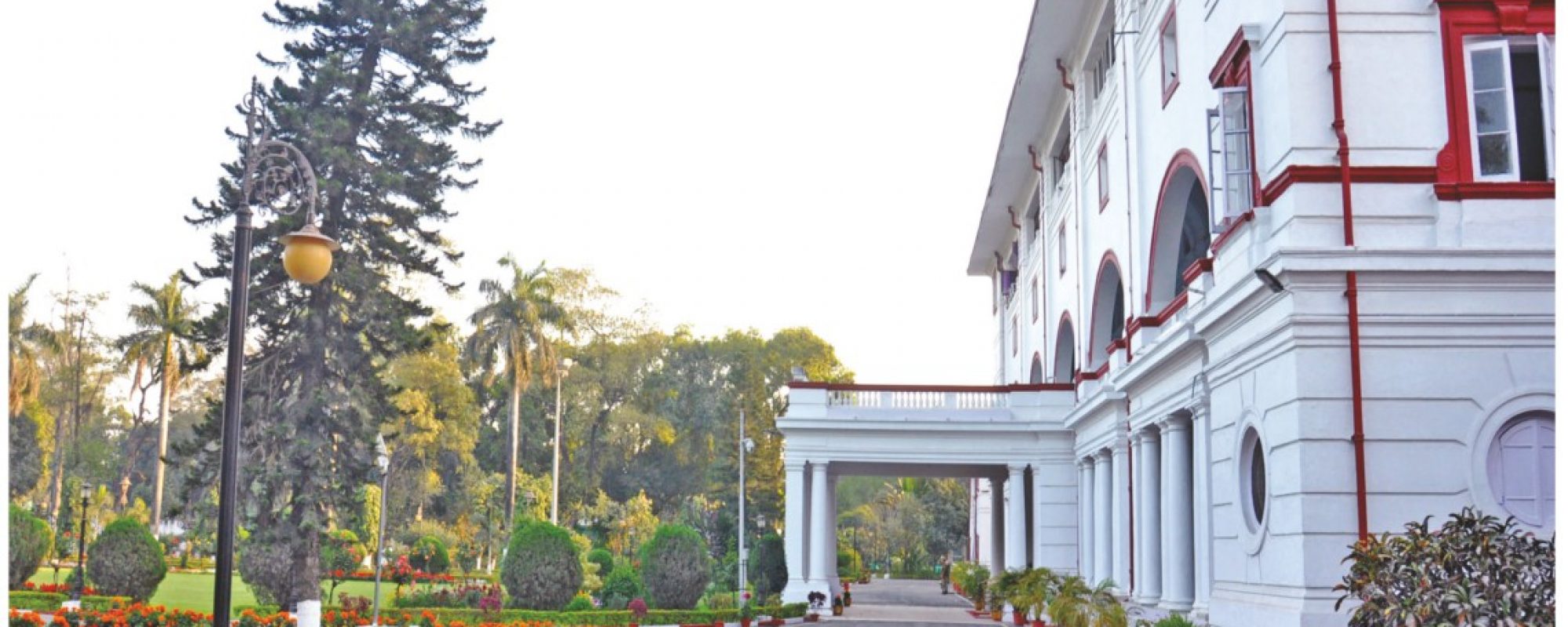
The front portico of Raj Bhavan
As a marker of the importance of the office of Governor, two of them became President of the Republic of India – Zakir Hussain in 1967, and Ram Nath Kovind in 2017. The singular fact about both of them is that they had served Bihar as its Governor.
Modern state formation
Prior to 1912, Bihar, as a part of Greater Bengal, was ruled by a Lt Governor and his secretariat at Calcutta, which was also the seat of the provincial government of Greater Bengal. For practical purposes, Bihar was ruled and managed by three divisional commissioners and district collectors. At Patna, the administrative headquarters used to be at Bankipore. The province had no state capital of its own.All that changed when King George V, at the Delhi Durbar, disclosed the “top secret” decision of the imperial government regarding the separation of Bihar – and also of Assam – from Bengal. He also announced the decision with regard to the proposal to make Delhi the capital of India. He said: “It is my desire that the planning and designing of the public buildings to be erected will be considered with greatest deliberations and care, so that the new creation
may be in every way worthy of this ancient and beautiful city (‘An Imperial Vision’ by Thomas R Metcalf).”This blueprint was extended and adopted in the designing of capital city Patna as well. Finally, the then Viceroy Lord Hardinge made the final formal proclamation regarding the creation of the province of Bihar and Orissa with its boundaries, through the Government of India Act, 1912. The proclamation was made on March 22, 1912. With this and the ensuing formation of the institution of office of Lt Governor in Council, the fast-paced elaboration of the new state formation in Bihar also happened, which set it along the long journey of its educational, social and political modernisation. Later, the province of Bihar, after separation from Orissa in 1936, consisted of four divisions –Bhagalpur, Patna, Tirhut and Chota Nagpur. Their respective districts were: Bhagalpur –Bhagalpur, Munger, Purnia, Santhal Parganas; Patna – Patna, Gaya and Shahabad; Tirhut – Champaran, Darbhanga, Muzaffarpur and Saran; and Chota Nagpur – Hazaribagh, Manbhum, Palamau, and Ranchi.
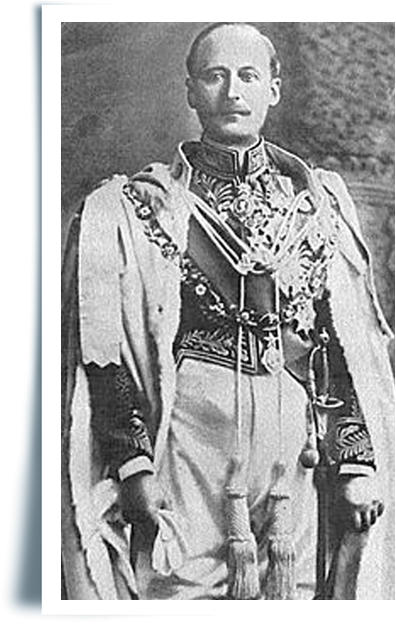
Viceroy and Governor-General of India, Lord Charles Hardinge
Indeed, things started moving fast. First Lt Governor Charles Stuart Bayley took charge on April 1, 1912. He chose the residence of the commissioner at Chhajjubag in Patna, earlier purchased from Darbhanga Raj. Otherwise, his stay was to be at Ranchi due to its salubrious climate. Bayley was to be aided and assisted by a three-member executive council, whose membership could be increased to four by the Lt Governor. The three members of the executive council were: E A Gait, E V Levinge, and Rameshwar Singh, Maharaja of Darbhanga. Besides, there were 19 additional members, and 21 elected members, including five each elected by municipalities, district boards and landholders, as well as four by Muslim bodies, and one each by cane planters and mining communities.
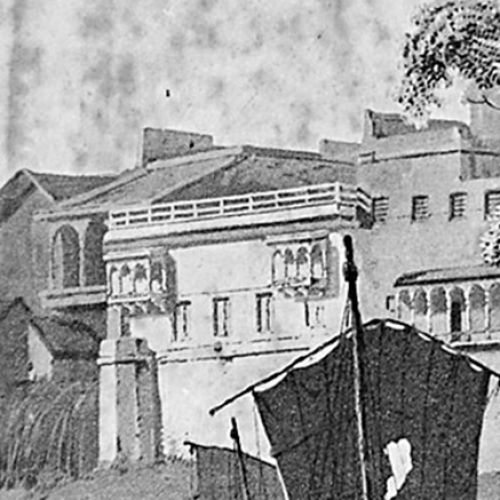
An aquatint print by Thomas Daniell, titled ‘Part of the city of Patna on the river Ganges’, hung on the wall of Raj Bhavan, Bihar
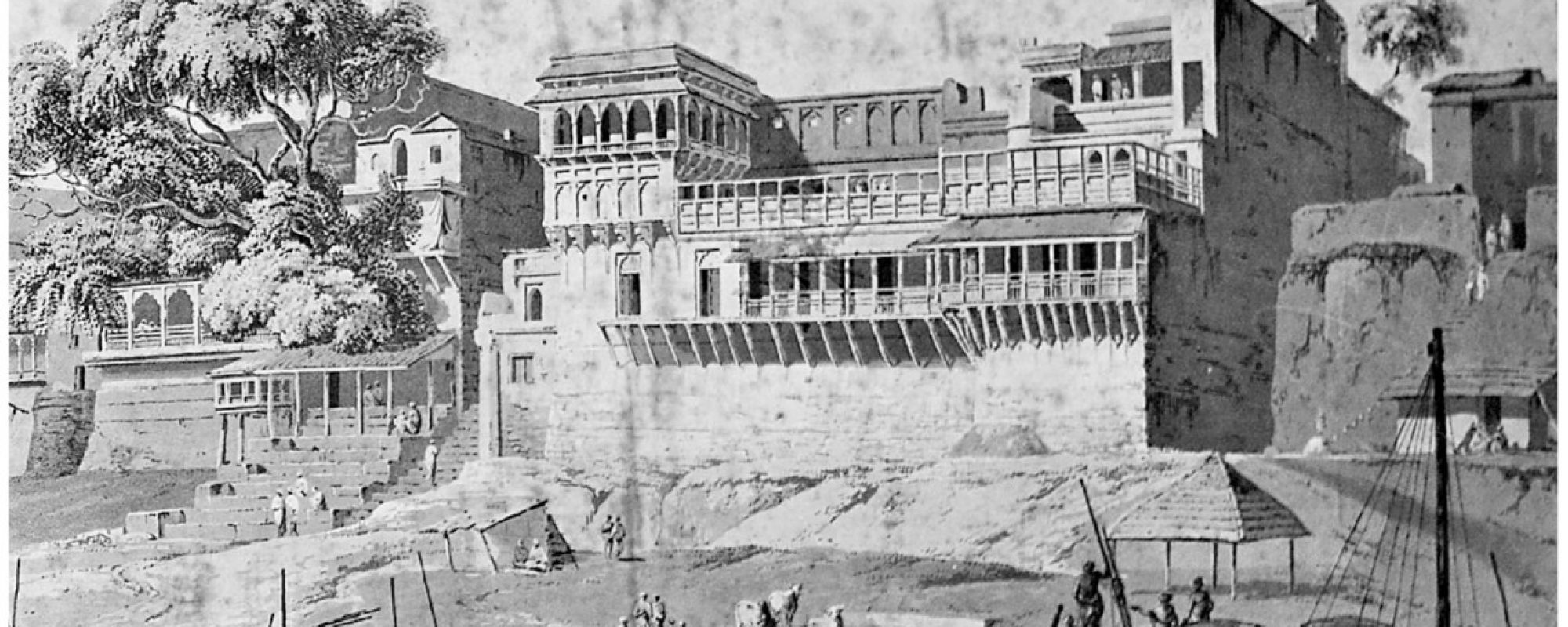

The foundation stone of Bihar Raj Bhavan, laid by Lord Charles Baron Hardinge, Viceroy of India, on December 1, 1913
Making of the capital city
A new structure of governance began to take shape. Bayley called for holding of Bankipore Durbar at his Chhajjubag residence on November 21, 1912. At the Durbar, the representatives of five official and social associations read out their memoranda. The bodies they represented were: Behar Landholders’ Association, District Board of Patna, Municipality of Patna, Provincial Muslim League, Pradhan Bhumihar Sabha, Kshatriya Prantic Sabha and Bengalee Settlers’ Association. They, recalling the ancient history of Patna, wanted the new capital to reflect the ancient glory.
After they had gone through the motions of deliberation, Bayley addressed the audience. He said: “I notice with pleasure your frequent reference to the past grandeur of Patna and to the position once held by the famous city of Patliputra as the capital of one of the greatest dynasties that have ruled India. You have every reason to be proud of its traditions and, though Patna has under- gone many vicissitudes and has of late years lost much of its importance as trade centre, we may well hope that as the capital of a great province, it will regain some portion at least of its former prosperity. No efforts will be wanting to this end on the part of Government (‘The Making of a Province – Part II; select documents 1874-1917).”
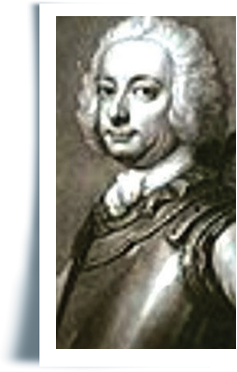
First Lt Governor of Bihar, Sir Charles Stuart Bayley
Viceroy Hardinge laid the foundation stone for the construction of Raj Bhavan at Patna in 1913,by 1916, the three prominent buildings – RajBhavan, Old Secretariat and Patna High Court – were ready for occupation
He added, “The laying out of the Civil Station is a matter which has been under consideration ever since the site was selected. The plans are now being prepared and I believe that when they are complete they will leave no room for complaint either as to the suitability of the design or the dignity of the proposed buildings.” By curious coincidence, this was also the period of the making of India’s capital at New Delhi and Australia’s capital Canberra, while Pretoria, the capital of South Africa, was already established. Viceroy Lord Hardinge selected architects Edwin Lutyens and Herbert Baker, who had designed Union Buildings of South Africa at Pretoria, to do urban planning and designing of the buildings of New Delhi. The architect he selected to plan and design new city of Patna – or New Capital Area – was J F Munnings, a New Zealander who was familiar with the works of Lutyens and Baker and had also designed buildings in Dacca. Munnings was entrusted with the task of the designing of the Government Houses (later called the Governor House) of Ranchi and Patna, the secretariat (now popularly known as old secretariat) and Patna High Court buildings. The site selected for New Capital Area of Patna was a huge rectangular space
comprising what today is Sanjay Gandhi Biological and Botanical Park, popularly called Patna Zoo, Patna Golf Club, and the area enclosed by Bayley Road, Gardiner Road and Hardinge Road up to Patna airport. The government quarters for the secretariat and other staff of the government were to be located on the south of the railway line in Gardanibagh. Already, as the provincial government had begun to function under the Lt Governor, the clerical staff and officers were brought from Dacca to man the Bihar secretariat. They lived in tents at Gardanibagh. From 1913, the work on Government House at Ranchi had begun, and it was completed in two years, with Lt Governor Bayley promptly shifting there. Towards the end of the year, Viceroy Hardinge laid the foundation stone for the construction of Government House/ Raj Bhavan at Patna. It took three years for Bihar’s Government House, present day old secretariat and Patna High Court buildings to be completed. In between, the major roads – Bayley, Hardinge, Serpentine and Gardiner roads – were also constructed, and by 1916, the three prominent buildings – Raj Bhavan, old secretariat and Patna High Court – were ready for occupation. Lord Hardinge inaugurated them on February 3, 1916.
Before that happened, Bayley had issued yet another significant notification on January 28, 1916. The notification officially designated Patna as the capital city of the province of Bihar. It also notified the conversion of Patna Municipality, earlier constituted in 1864, to Patna City Municipality, and thereby, set the stage for a separate municipal body for the new city of Patna.
Functioning of modern state
Bihar finally began to function as a modern state in the colonial period. The Patna High Court started functioning from March 1, 1916, whereby, the jurisdiction of Calcutta High Court over Bihar ceased and the control of the judicial administration was also delinked from it. In between, the government appointed a committee on May 19, 1913, to enable the establishment of a university either at Patna or near it. As a result, Patna University came into existence on October 1, 1917, setting the stage for the expansion of institutions of higher education in Bihar. In 1946, Bihar had 18 colleges for males and two for females. In 1949, it increased to 25 colleges for males and three for females, and the number of students comprised 17,756 males and 433 females. As to the policing machinery, in 1937, Bihar had 12,698 officers and constables (officially called ‘men’). However, around the time of Mahatma Gandhi’s Champaran ‘Satyagrah’ in 1917-18, the dynamics of national freedom struggle changed. Bihar became a participant and witness
to the Non-cooperation Movement, Gandhi’s Dandi March, and the Civil Disobedience Movement, culminating in the Quit India Movement (1942).
Constitutional head of the state
The state of Bihar, with its judicial administration, civil bureaucracy, police and jail administration, and revenue collection affairs, was presided over by the Lt Governor till 1920. Thereon, the era of the institution of Governor started with the administrative reforms under Government of India Act, 1919. Black and white portraits of Lt Governors and Governors – framed and hung on the two walls of the Raj Bhavan as one enters the building from its portico – serve as a signpost to this rich history. Overall, Bihar and Orissa had four Lt Governors and 13 Governors in the colonial period till 1936, and after this, when Orissa was separated from Bihar, the latter had eight Governors till August 14, 1947. During the Second World War (1939-45), Bihar had Governors on four occasions –Thomas Alexander Stewart, Thomas George Rutherford, Robert Francis Mundie – with Rutherford holding the office twice. The last British Governor of the state was Sir Hugh Dow (May 13, 1946 to August 14, 1947). He, as noted by Philip Mason in his book ‘Men Who Ruled India’, had done exemplary job in performing the war-time services during the Second World War. In the post-Independence period, Bihar, by now, has had 38 Governors.
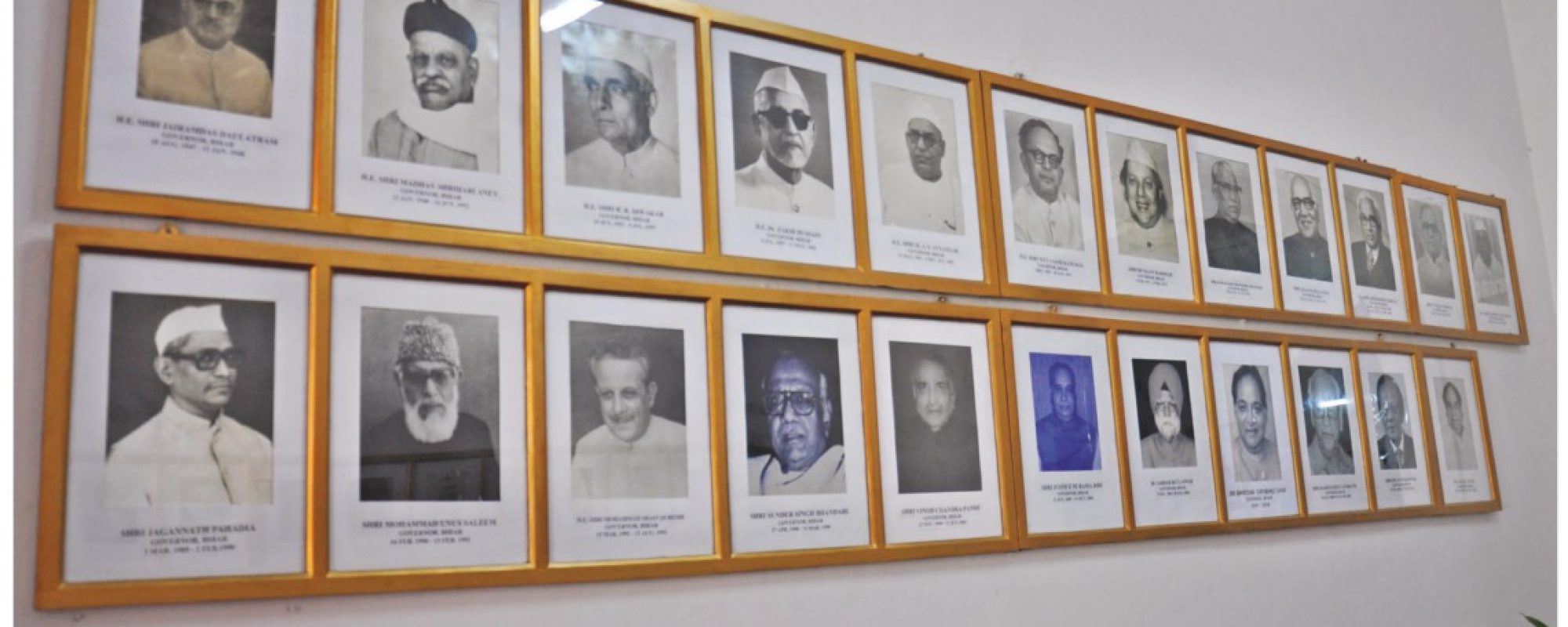
Portraits of former Governors hung on the walls of the ground floor in Bihar Raj Bhavan
Besides, in the colonial period, Bihar and Orissa together had four officiating Governors. After Independence, Bihar had eight officiating Governors. Also, by now,on three occasions, two West Bengal Governors – Gopalkrishna Gandhi and Keshari Nath Tripathi – have held the office of Bihar Governor in dual charge, with Tripathi in charge twice. All through, no woman has been in the office of Lt Governor or Governor of Bihar in either pre-Independence period or post-Independence era. Edward Albert Gait became Lt Governor twice. Similarly, when the institution of Governor came into existence in 1920, Satyendra Prasanna Sinha from Raipur in Orissa, also known as Lord Baron Sinha, was the first Governor of Indian origin. Hugh Lansdown Stephenson and David Sifton held the office of Governor thrice, while Maurice Garnier Hallet, Thomas George Rutherford and Thomas Alexander Stewart twice each. After Independence, none of the Governors held the office twice, except Akhlaqur Rahman Kidwai. When Jawaharlal Nehru was the Prime Minister, three Governors
R R Diwakar, Zakir Husain and M A S Ayyangar – served their full term of five years. Kidwai served for six years, and in the second term for five years. On five occasions, Chief Justices of the Patna High Court – U N Sinha, K B N Singh, Dipak Kumar Sen, G G Sohoni, and B M Lal – served as Officiating Governors The boundary of Bihar and Orissa was rede- fined as Orissa separated from Bihar, when James David Sifton (1932-37) was the Governor.Also, Jharkhand, comprisingthe districts of the then Chota Nagpur and Santhal Pargana administrative divisions, became separate in November 2000, when Vinod Chandra Pande held the post. During the tenures of second and third Governor, Madhav Srihari Aney and R R Diwakar, respectively, Bihar saw notable leaps. University and college education saw new expansion as Patna University was bifurcated into two – Patna University and Bihar University – on January 2, 1952, paving the way for spread of higher education.
Jairam Das Daulatram was the first Governor after Independence. Among the first decisions taken in his name were the orders regarding constructing a memorial in the name of the seven students who were martyred in police firing while trying to unfurl the national flag near the Vidhan Sabha on August 9 during the Quit India Movement in 1942, and the renaming of the sprawling ‘maidan’ (also called Race Course Maidan) in the colonial period as Gandhi Maidan. Mahatma Gandhi, in an appeal to quell the violence during Partition, had sat on fast in the corner of the Maidan, where his statue is now installed
The First Five Year Plan was also introduced during this period, which also saw reforms in administra- tion, work on Kosi Barrage Project, and expansion of primary, middle and secondary education as Bihar School Examination Board was established in 1952. The launch of the library movement with cen- tral assistance and institution building for the pro- motion of cultural research activities was also initi- ated during this period.The institutions opened included: Nalanda Institute of Post-Graduate Studies Research in Pali and Prakrit and Buddhist Teaching at Nalanda, Mithila Institute of Post- Graduate Studies and Research in Sanskrit at Darbhanga, Bihar Rashtrabhasha Parishad, K P Jayaswal Research Institute, both at Patna, and Institute of Prakrit Studies, Vaishali.
The devastating 1934 earthquake had put the state under strain during Governor David Sifton’s tenure. The 1967 famine did the same under the tenures of M A S Ayyangar and Nityanand Kanungo. In fact, there ensued a long era of social and economic churning. Raj Bhavan experienced the effects of political instability with frequent changes and short tenures of Governors.
President’s rule
The state was put under President’s rule on eight occasions for various reasons. On the first three occasions – June 29, 1968 to February 26, 1969; July 4, 1969 to February 16, 1970; and January 9, 1972 to March 19, 1972 – it was due to political instability caused by defections of legislators. The fourth and fifth times were from April 30, 1977 to June 24, 1977; and February 17, 1980 to June 8, 1980.
President’s rule was imposed for the sixth time from March 28, 1995 to April 5, 1995 to facilitate vote on account by Parliament, as the results of assembly elections were awaited. On the seventh occassion – from February 12, 1999 to March 9, 1999 – deterio- ration of law and order situation led to the imposi- tion of President’s Rule.
Finally, the Centre imposed President’s rule for the eighth time – from March 7, 2005 to November 24, 2005 – as the results of the assembly election were indecisive and did not give majority to any political party or combine to form government.
President’s Rule was imposed in the state eight times: under Nityanand Kanungo twice, in 1968 and 1969; under Dev Kant Baruah in 1972; under Jagannath Kaushal in 1977; under A R Kidwai twice in 1980 and 1995; under Ram Sundar Bhandari in 1999; and under Buta Singh in 2005


